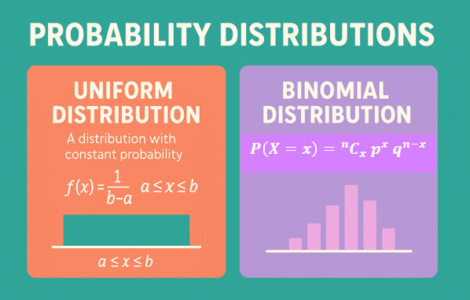
Probability Distributions
Free
About This Course
This topic introduces learners to probability distributions such as binomial, normal, and Poisson distributions. Students will study their properties, use tables or formulas, and apply distributions to solve problems.
Learning Outcomes:
By the end of this topic, learners should be able to:
- Describe key probability distributions and their properties.
- Use binomial and normal distribution tables to find probabilities.
- Calculate mean and variance for common distributions.
- Perform a binomial experiment and use it to determine probabilities of success p, and failure q, for n trials.
- Determine probabilities using binomial formula and the mathematical tables.
- Explore mean, mode and variance of a binomial distribution.
- Generates a rectangular distribution to derive its probability distribution function, p.d.f.
- Discuss and determine probabilities in rectangular distribution using real life scenarios.
- Explore the mean, mode and variance of the rectangular distribution.
- Discuss properties of normal distribution and how it can be standardised to a standard normal, using graphical representations.
- Discuss standardisation of random variables and use of normal distribution tables/calculators to determine probabilities.
- Discuss how to de- standardise the normal variables to determine parameters.
- Discuss conditions for a binomial distribution to be approximated by normal distribution and how to obtain continuous variables.
- Determine the expectation and variance.
- Apply the binomial, rectangular and normal distributions to predict outcomes of random processes in real life.





